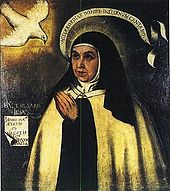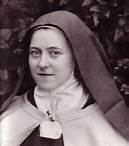Sainthood:
Posted by SociusMay 22
The word ‘Sainthood’ crosses my mind, and the next thought that arises is in the form of a question: “What makes a saint, what is sainthood all about? ” In answer, I suppose there must be so many different answers – impossible to count – and each of them would appeal in different ways to different people.
For my part, I did give the question some thought, and, off the ‘top of my head’ came some things, some qualities, that must be common to all possible answers. Some of these include the loss of ‘self’ and of all that this mortal world means or matters, meaning effectively, that one begins to live with no thought for personal stuff – possessions, position, power, money, job, ambition and the like. In putting aside all thoughts of self, it must also include no thought about clinging on to life. In many cases, it may even include the welcoming of death – with but one thought in mind – that of joining God, Jesus and Mary, together with all the angels, saints and martyrs that have gone before, in that heavenly paradise. All this, summarised I think, can be expressed as one essential element of reality – that of putting God before everything – and this out of pure love for Him. When this happens, then nothing else matters.
Thoughts like these continued to invade my tiny mind, and in the end, I began to think in terms of just two examples, perhaps to point me in the right direction. The two saints ‘speaking’ to me were St. Teresa of Ávila and St. Thérèse of Lisieux.
Saint Teresa of Ávila:
 |
A portrait of Teresa, perhaps, most true to her appearance, aged 61, from an original painting of her in 1576
Also called Saint Teresa of Jesus, she was born in March 1515 and Christened Teresa Sanchez de Cepeda y Ahumada. Without wishing to enter into her life in detail, she spent much of her life in contemplation and mental prayer. She became known as a one of the most important members of the ‘Spanish Mystics’, a movement concerned in the reform of the Catholic Church, in Spain, during the 16th and 17th Centuries. She was also a Carmelite nun, a reformer of that Order and the founder of the Discalced Carmelites (along with St. John of the Cross). She was canonised in 1622, forty years after her death in 1582, and in 1970, she was made a Doctor of the Church, by Pope Paul VI.
Her books include her autobiography (‘The Life of Teresa of Jesus’), and an original work ‘El Castillo Interior’ (‘The Interior Castle’) They are an important part of Spanish Renaissance literature. They are also at the centre of Spanish writings on Christian mysticism and meditation. One of her most important works was the ‘Camino de Perfección’ (‘The Way of Perfection’), in which she sets out her way of making progress in the contemplative life. She called this a ‘living book’ and in it set out to teach her nuns how to progress to God through prayer and meditation
As a nun, she suffered greatly from sickness during her life, and in this, it is said, she experienced periods of religious ecstasy. St. Teresa describes a personal ‘progression’ from the lowest state of ‘recollection’ through ‘devotions of silence’ (the second stage), to ‘devotions of ecstasy’, the last stage being that of perfect union with God. Over time, the difference between venial and mortal sins became clear to her, and, in this regard, she began to understand the awful true nature of sin, her own impotence in confronting sin, and the necessity of our absolute subjection to God.
For my own part, I have always taken to heart – with great wonderment – that seemingly so simple verse, ‘Saint Teresa’s Bookmark’ – simple, yes! – but so profound:
St. Teresa’s Bookmark:
Let nothing disturb you; let nothing frighten you.
All things are passing. God never changes.
Patience obtains all things.
Nothing is wanting to him who possesses God.
God alone suffices.
Saint Thérèse of Lisieux:
 |
She was born in January 1873, and was Baptised, Marie-Françoise-Thérèse Martin. She, too, became a Carmelite nun and was also known as Saint Thérèse of the Child Jesus and the Holy Face, as “The Little Flower of Jesus” or simply, “The Little Flower”.
Again, my feeling is that this is not the place to enter into a lengthy treatise on her life as a saint, but simply to refer to her life and her writings, briefly, and in a way that supports my original argument as to ‘What makes a Saint?’.
 |
The Imitation of Christ by Thomas à Kempis, Composed in Latin, 1418 – 1427, (In the Royal Library, Brussels)
Before she was 14 years of age, she began an intent reading of the book ‘The Imitation of Christ’ by Thomas à Kempis, a devotional handbook and religious classic on ‘The Spiritual Life’. Divided into four books, the text provides detailed spiritual instructions: “Helpful Counsels of the Spiritual Life”, “Directives for the Interior Life”, “On Interior Consolation” and “On the Blessed Sacrament”. Its approach is characterized by its emphasis on the interior life and withdrawal from the world, and, not surprisingly, it places a high level of importance on the Holy Eucharist as one of it key elements.
Thérèse paid great importance to her readings of this book so much so that she is said to have paraphrased parts of it no less than 50 times in her own writings. One extract appears to have meant a great deal to her:
“The Kingdom of God is within you… Turn thee with thy whole heart unto the Lord; and forsake this wretched world: and thy soul shall find rest.”
Humble of heart, she said of her own spirituality, “My way is all confidence and love,” and, in the face of her littleness and nothingness, she trusted in God to be her sanctity. She wrote: “I wanted to find an elevator that would raise me to Jesus. The elevator would be the arms of Jesus, lifting me in all my nothingness.” She believed that it was not necessary to achieve big things, to perform heroic acts or to do great deeds in order to be holy. She wrote in her ‘Little Way’:
“Love proves itself by deeds, so how am I to show my love? Great deeds are forbidden me. The only way I can prove my love is by scattering flowers and these flowers are every little sacrifice, every glance and word, and the doing of the least actions for love.”
She wrote of her horror of pretence and of hypocrisy, maintaining her love of simplicity in all things, and this gave rise to her main treatise on living a holy and spiritual life, in the simplest possible way – again – her ‘Little Way’:
“Sometimes, when I read spiritual treatises in which perfection is shown with a thousand obstacles, surrounded by a crowd of illusions, my poor little mind quickly tires. I close the learned book which is breaking my head and drying up my heart, and I take up Holy Scripture. Then all seems luminous to me; a single word uncovers for my soul infinite horizons; perfection seems simple; I see that it is enough to recognize one’s nothingness and to abandon oneself, like a child, into God’s arms. Leaving to great souls, to great minds, the beautiful books I cannot understand, I rejoice to be little because only children, and those who are like them, will be admitted to the heavenly banquet.”
And in her approach to prayer:
“For me, prayer is a movement of the heart; it is a simple glance toward Heaven; it is a cry of gratitude and love in times of trial as well as in times of joy; finally, it is something great, supernatural, which expands my soul and unites me to Jesus…I have not the courage to look through books for beautiful prayers…I do like a child who does not know how to read; I say very simply to God what I want to say, and He always understands me.”
In all of this, I return to my original theme of the blog, which is that to be truly holy, one must leave aside the things of this world and live a life focussed on God alone. Such a life would be very difficult, if not impossible, for most of us. Saint Thérèse, like Saint Teresa of Ávila before her, lived her short life, (1873 – 1897), in just such a way. At the tender age of just 24 years, and having suffered terribly from tuberculosis, she said on her death bed: “I would never have believed it possible to suffer so much,” yet she accepted those sufferings out of love for her Lord and God. Her last words were: “My God, I love you.” No thoughts here of the world and what it can offer – no regrets at leaving behind her life in the monastery, her sisters or anything that one may think she had achieved in this world. Her words, I think, were ones of welcome to the next – and of what was still to come.
And, the answer to my first question, “What makes a saint?” ……. God makes a saint!
Socius

No comments